Spigot glass railing نرده شیشه ای اسپیگات refers to a type of glass railing system where the glass panels are mounted on metal spigots, which are small cylindrical posts that provide support for the glass. The spigots are usually made of stainless steel or other metal and are anchored into the floor or surface. This type of railing provides a modern, sleek look and allows for an unobstructed view. The glass panels used in spigot glass railings are typically tempered or laminated for added strength and protection. Spigot glass railings are often used in modern or contemporary design, both indoors and outdoors, to create a minimalist and stylish look.
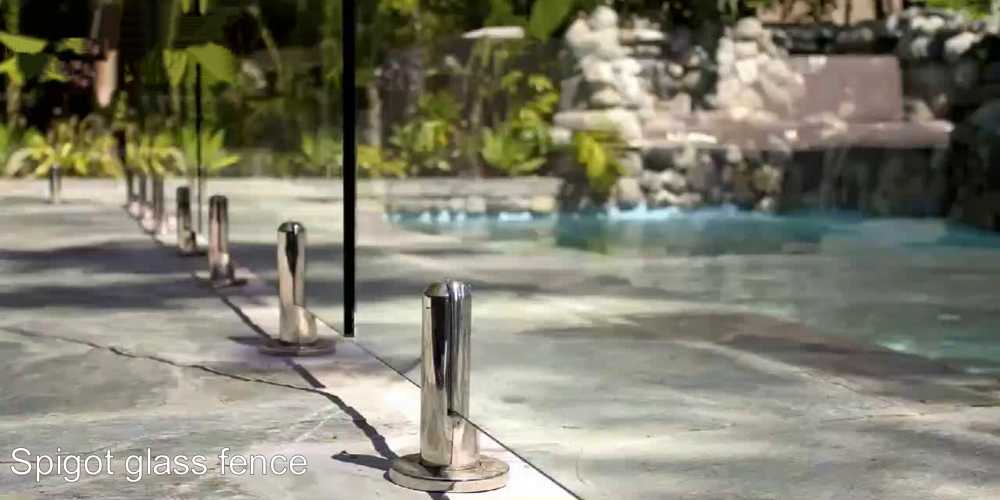
Introduction to Spigot Glass Railing
Spigot glass railing is a modern and elegant railing system that is commonly used in residential and commercial buildings. It is characterized by its sleek and minimalist design, which features glass panels that are secured in place by metal spigots. This type of railing is becoming increasingly popular due to its ability to provide a clear and unobstructed view, making it ideal for balconies, terraces, staircases, and other areas where visibility is important. The spigots themselves are usually made of stainless steel, which provides durability and resistance to corrosion. Overall, spigot glass railing is a stylish and practical solution for creating a safe and open atmosphere in any indoor or outdoor space.
Design and Style Options spigot glass railing
Spigot glass railing is highly customizable and offers a variety of design and style options to suit different preferences and architectural styles. Some of the most common design options include:
- Frameless: A frameless glass railing system is a popular choice for those looking for a minimalist and modern look. The glass panels are held in place by spigots, which are mounted directly onto the surface without the need for a metal frame.
- Semi-frameless: A semi-frameless glass railing system features a metal handrail that is attached to the spigots, creating a more defined edge and providing extra stability and support.
- Framed: A framed glass railing system has a metal frame that surrounds the glass panels, providing a more traditional look and added durability.
- Customizable Spigot Color: The color of the spigots can be customized to match the existing décor and architecture of the building.
- Glass Tinting: The glass panels can be tinted to provide increased privacy and reduce glare.
- Glass Etching: Glass etching is a popular option for those looking to add a unique touch to their spigot glass railing. Etched glass panels can feature a variety of patterns and designs.
These are just a few of the many design and style options available for spigot glass railing. The right choice will depend on the specific needs and preferences of the client.
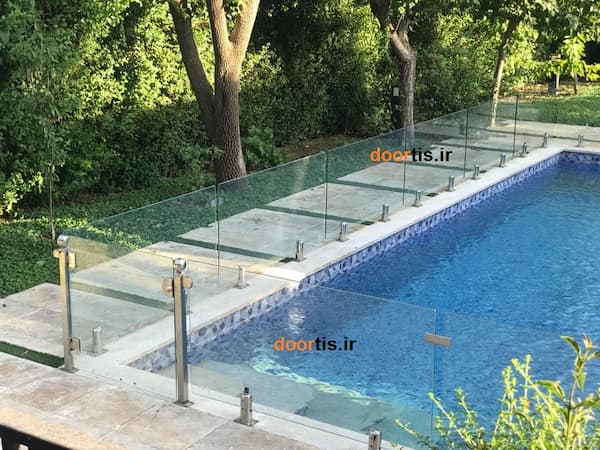
· Materials Used in Spigot Glass Railing
Spigot glass railing typically consists of two main materials: glass and metal. The specific materials used will vary depending on the manufacturer and the type of spigot glass railing system being used, but some of the most common materials include:
- Glass: The glass panels used in spigot glass railing are usually made of tempered glass, which is a type of safety glass that is highly resistant to breakage. The thickness of the glass panels can vary, with common options ranging from 6mm to 12mm.
- Metal: The spigots and any metal components used in the railing system are usually made of stainless steel, which is a durable and corrosion-resistant material. The stainless steel can be finished in a variety of colors to match the existing décor and architecture of the building.
- Hardware: The hardware used to secure the glass panels in place and connect the different components of the railing system will vary depending on the specific type of spigot glass railing system being used. Common hardware options include bolts, screws, and clamps.
Overall, the materials used in spigot glass railing systems are carefully selected to provide a combination of durability, style, and functionality.
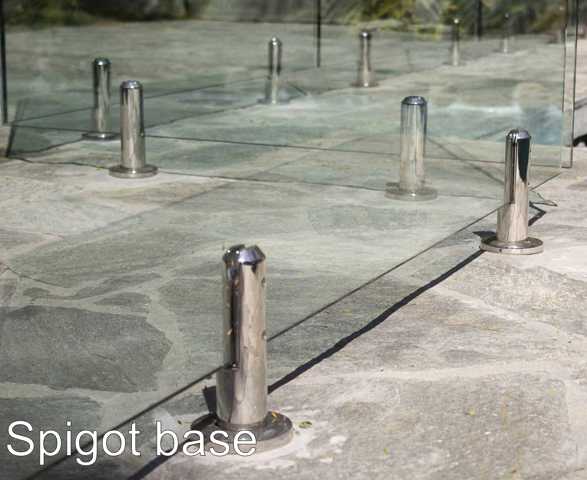
· Installation Process for Spigot Glass Railing
The installation process for spigot glass railing can vary depending on the specific type of system being used, but it typically involves the following steps:
- Preparation: The first step is to prepare the surface where the railing will be installed. This usually involves cleaning and levelling the surface to ensure that it is ready for the installation.
- Measurement: The next step is to take precise measurements of the area where the railing will be installed. This is important to ensure that the right size and number of components and glass panels are ordered.
- Marking: Once the measurements have been taken, the surface is marked to indicate the placement of the spigots and other components.
- Installation of the Spigots: The spigots are then installed into the surface. This is usually done by drilling holes into the surface and securing the spigots in place with bolts or other hardware.
- Assembly of the Railing System: The next step is to assemble the different components of the railing system, including the spigots, metal handrails (if applicable), and glass panels.
- Installation of the Glass Panels: The glass panels are then inserted into the spigots and secured in place. This is usually done with the use of silicone or other type of sealant.
- Finishing: The final step is to finish the installation, which typically involves cleaning up the site and checking the system for proper alignment and stability.
The installation process for spigot glass railing can be complex and requires a high level of precision and attention to detail. It is recommended to hire a professional installer who has experience with this type of railing system.
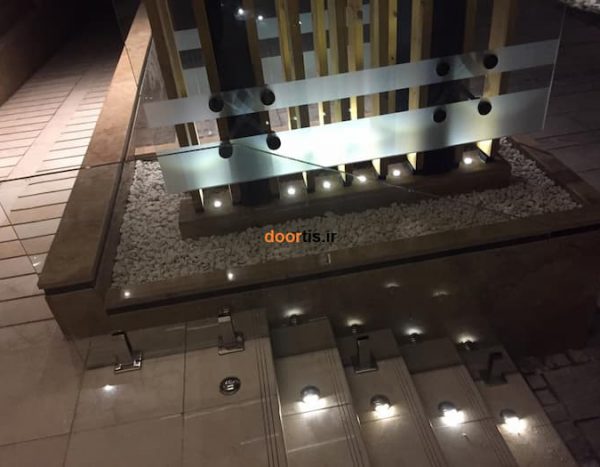
· Advantages of Using Spigot Glass Railing
Spigot glass railing offers a number of advantages over traditional railing systems, including:
- Unobstructed View: One of the biggest advantages of spigot glass railing is that it provides a clear and unobstructed view, making it ideal for balconies, terraces, and other areas where visibility is important.
- Modern and Elegant Design: The sleek and minimalist design of spigot glass railing adds a touch of style and sophistication to any space.
- Durability: The use of tempered glass and stainless steel in the construction of spigot glass railing provides durability and resistance to corrosion, ensuring a long lifespan for the railing system.
- Safety: Spigot glass railing systems are designed to meet strict safety standards, ensuring that they are able to provide a safe and secure railing solution.
- Customization: Spigot glass railing is highly customizable, offering a variety of design and style options to suit different preferences and architectural styles.
- Low Maintenance: Spigot glass railing systems are easy to clean and maintain, making them a practical and convenient choice for both residential and commercial spaces.
- Cost-Effective: Compared to some other railing systems, spigot glass railing can be a cost-effective solution, especially for smaller projects.
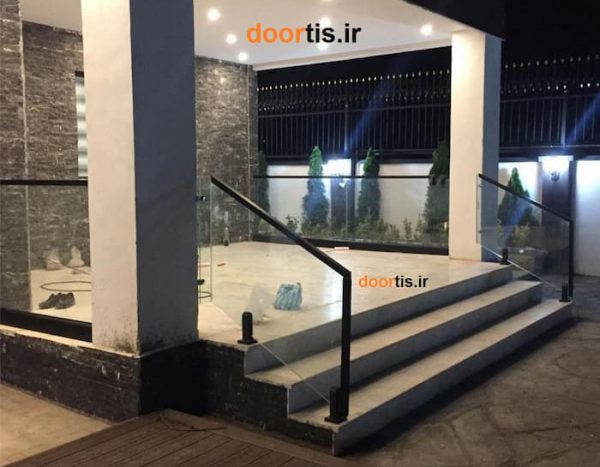
These are just a few of the many advantages offered by spigot glass railing. Whether you're looking for a modern and stylish solution for your home or business, spigot glass railing is an excellent choice that is sure to impress.
Source: https://doortis.ir/%D9%87%D9%86%D8%AF%D8%B1%DB%8C%D9%84-%D8%B4%DB%8C%D8%B4%D9%87-%D8%A7%DB%8C-%D9%86%D8%B1%D8%AF%D9%87-%D8%B4%DB%8C%D8%B4%D9%87-%D8%A7%DB%8C/
Source: https://doortis.ir/

 icons at the top
right corner of the subsection.
icons at the top
right corner of the subsection.